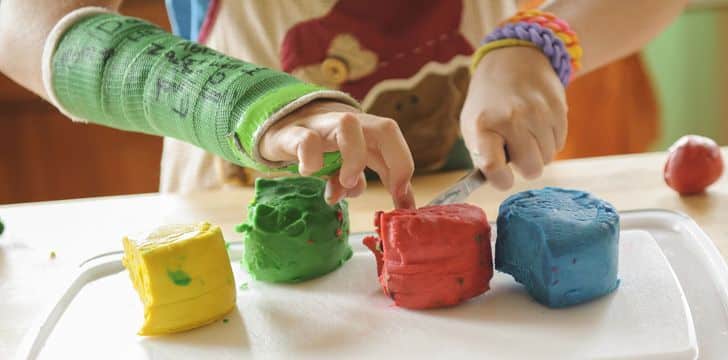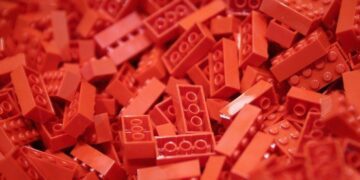Play-Doh is part of every child’s upbringing, whether it’s through molding it into shapes at kindergarten or even through our teen years to being adults, playing the well know Play-Doh game: Rapidough.
It is a creative tool loved by everyone, but have you ever wondered where it comes from?
Who invented the stretchy colorful stuff? Let’s explore the history and find out more about this mysterious molding material.
Who invented Play-Doh?
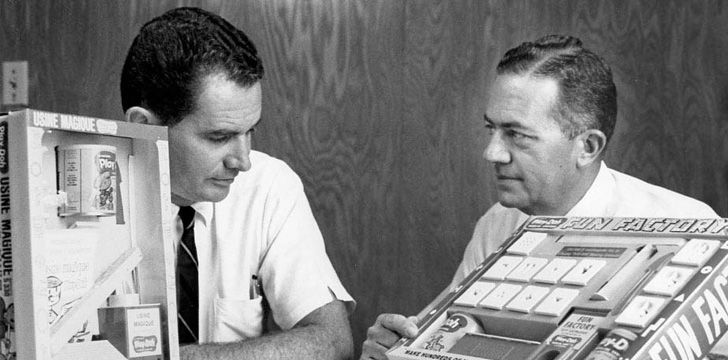
To start with, the invention of Play-Doh was an accident!
Noah McVicker had a family soap shop and one day was experimenting with flour, water, salt, boric acid, and mineral oil when he came up with the substance that is now called Play-Doh.
His soap company called, Kutol Products, based in Ohio, originally marketed his creation as a wallpaper cleaner in the 1930s.
Why was it originally wallpaper cleaner?
It turned out that it made the perfect wallpaper cleaner as it didn’t contain any toxic chemicals, meaning that people could clean their walls without having to worry about staining their beautiful wallpapers.
It also had a rubbery texture therefore, you didn’t have to clean any of the substance off the walls after use, as it remained as one solid compound.
It wasn’t until teachers realized that it could be used as an alternative modeling compound for arts and crafts projects at school that McVicker began to sell out of his product.
This became a turning point for its use.
How did Play-Doh become so popular?
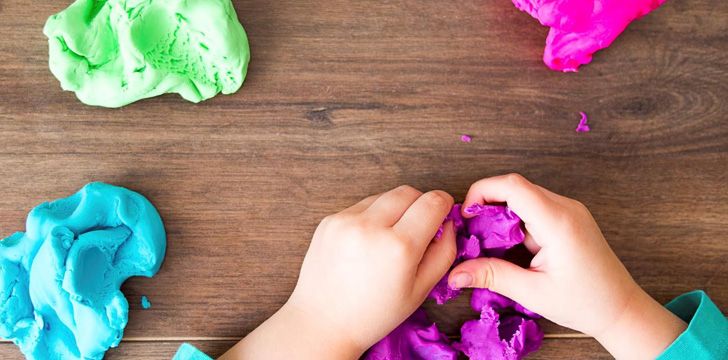
In the mid-1950s, the product was reworked, rebranded, and marketed to schools as a modeling compound.
At an educational convention for school supplies in 1956, there was a demonstration using Play-Doh, and this is when it caught the attention of many teachers.
1956 was the year for Play-Doh when McVicker formed a company called Rainbow Crafts in order to produce and sell Play-Doh in the toy industry.
Department stores across the US began to stock Play-Doh, and after it had been shown on various children’s television shows in 1957, it became a popular toy.
Play-Doh’s packaging history.
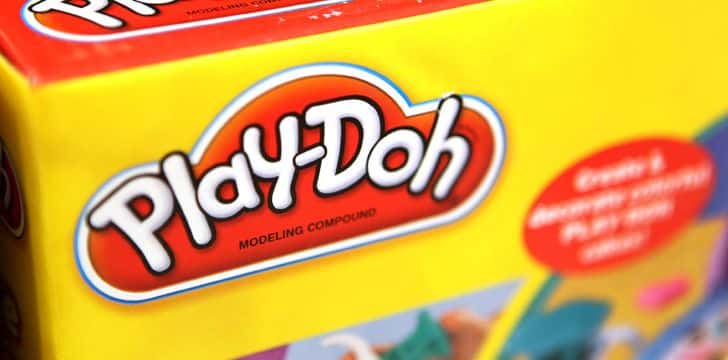
After much experimentation by McVicker, he decided to sell his product in cardboard cans with metal bottoms, as it would keep the modeling substance from drying out.
The substance needed to be kept moist for modeling, and paper packaging often made the product dry up over time.
It was essential for McVickers to create packaging to store Play-Doh that would keep it from drying out.
The cans allowed Play-Doh to be mass produced, stored, and shipped to various stores whilst keeping its moist texture.
In the 1980s, the product was changed to be packaged in plastic tubs, as the bottoms of the previous cans had a tendency to rust.
This also meant that the product had an even longer shelf life and therefore created the opportunity to expand the business.
Play-Doh goes worldwide!
In 1964 Play-Doh is sent to Britain, France, and Italy to be marketed to Europe.
This was the first time Europe had seen and come across the compound.
By 2005 Play-Doh was being sold in over 75 countries across the world. This was a landmark time for Play-Doh as it reached a global level of distribution.
How did Play-Doh as a business grow?
After beginning as a wallpaper cleaner, it was advertised as a toy from the mid-1950s, and its journey within the toy market began to expand.
The development in the can design allowed shipping across the world, which led to a growth in popularity among children as a staple toy.
There have been various merchandise objects and accessories for the use of Play-Doh on the market.
This includes items such as The Fun Factory (a set of tools and sculpting mechanisms to use alongside Play-Doh).
Product Recognition
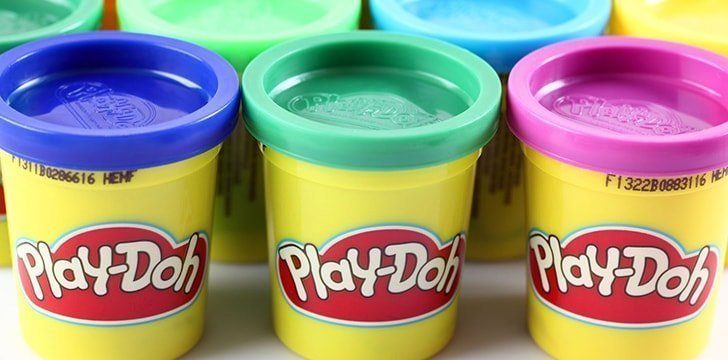
In 2003 The Toy Industry Association selected Play-Doh to be part of its “Century of Toys list.”
This created more attention around the product and credited it as an important part of children’s lives across the world.
Between 1955 and 2005, more than 2 billion cans of Play-Doh were sold worldwide.
So this childhood favorite toy was originally designed as a cleaning product and is to this day still being used in schools across the world as an arts and crafts modeling tool.
Although you can make the product at home, it’s not quite the same as opening up a tub of the original squishy stuff.
